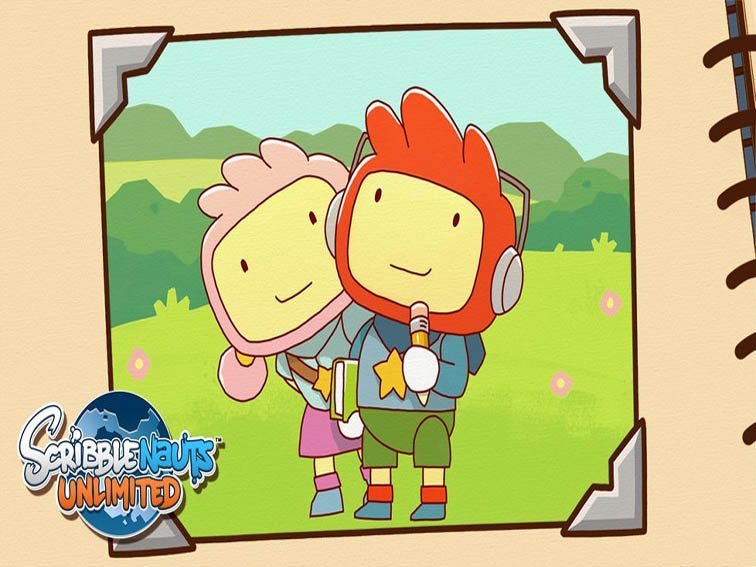
Here Are 10 Video Games To Get Started With Game-Based Learning
Looking for a way to engage students anywhere, anytime?
Games offer rewards, challenges and victories that students may not find in the real world, according to researcher Jane McGonigal. Mobile and online gaming can expand learning during school or after hours. Video games can bring their motivational magic to family time, online schooling programs or brick-and-mortar classrooms. Games can serve as platforms for lessons in math, science or just about anything — even if they weren’t designed to be educational — a leader in teaching technology told The Guardian. Here are 10 titles that we chose because they reach kids in diverse ways, encouraging creativity through tech-based learning.
1. Brain Age. This puzzle series targets players of all ages. Brain Age’s scoring system makes word games and logical dilemmas challenging by motivating players to reach a “low score” of Age 20. While adults may start with the built-in Sudoku feature, all players can rotate through activities that leverage the Nintendo DS touch screen and stylus to connect mind with body.
2. Leapster GS. Parents with concerns over kids’ screen time can appreciate the care with which Leap Frog has built an alternative platform for educational games. This handheld device includes kid-friendly multi-button controls and even a camera. Some of the titles include familiar characters from Disney and Pixar who engage kids in adventures centered on math, science and language.
3. LittleBigPlanet. One of Sony’s most popular titles takes advantage of touch technology on the PS Vita, challenging players to save the world through physics. As Sackboy, players interact with on-screen characters while developing the skills to build their own levels. For students, LittleBigPlanet quickly escalates from a platform game into an inspirational tool that unlocks dreams and designs. This title is also available on the PS3 console.
4. The Magic School Bus: Oceans. Kids who have followed Ms. Frizzle’s adventures in books and on PBS can grab the steering wheel for themselves for an undersea adventure. This collection of animations and mini-games mixes facts with fun. Players on the iPad app can alternate traditional question-and-answer learning with role playing and games of skill.
5. Math Playground. Available on Flash-capable browsers, this website presents plenty of flexibility to make math entertaining. Parents, teachers and kids can navigate this ever-expanding collection of mini-games, puzzles and classroom resources designed to disguise math exercises as adventures. Older kids can mix in videos of more traditional math lectures. A teacher created the site in 2002 and it has grown to include problem solving, mathematical art and real world math.
6. Minecraft. This Web-based “sandbox game” lets players build just about anything they want, provided they can survive the occasional attack of the “creepers.” Professional educators have even built their own plug-ins and curricula for Minecraft, with renderings of historic sites that can help students learn visualization skills. The game takes note of how players earn resources, so older students can learn lessons in economics.
7. My Word Coach. These word challenges give players the motivation to attempt higher scores every day. Players can draw missing letters from incomplete words, match other words to their definitions, and even pluck the correct answer to a question from a bowl of alphabet soup. Kids can try out the Nintendo DS or Wii versions, or explore the Spanish and French vocabulary games.
8. Professor Layton. This Nintendo series mixes traditional point-and-click puzzle solving with modern mini-games that captivate kids while they flex their logic muscles. London’s finest investigator and his sidekick Luke have stumbled through five titles in the series so far. Parents often report getting sucked into the Professor’s whimsical world, even when kids aren’t around.
9. Scribblenauts. This series pushes technology to its limits, challenging players to solve complex puzzles by summoning just about anything to help achieve a goal. Younger players tend to repeat levels, exploring alternative solutions to the problem of reaching a star embedded somewhere on the screen. Older players often try to stump the system, conjuring up bizarre and ridiculous items to beat each level. The app was built for iPhones and iPads, and you can find wallpaper and more on the official website.
10. uDraw Studio. This software solves the challenge of keeping young artists stocked with an endless supply of paint and canvas. You can get uDraw Studio Instant Artist bundled with uDraw GameTablets for Microsoft Xbox 360, Sony PS3 or Nintendo Wii. Players draw in real time on a variety of virtual surfaces, set in a realistic classroom setting. Geared toward younger kids, this software lets parents encourage creativity without sacrificing refrigerator real estate.
These 10 compelling games offer virtual learning environments that may become even more powerful when shared. For example, Mark Prensky’s book, Teaching Digital Natives, suggests that teachers and students can become partners while gaming. Not all schools and policy makers endorse video games, but parents can use their discretionary time to play alongside their children. Inventive titles like these can keep families entertained while kids develop lifelong learning habits.
This is a cross-post from onlineschools.com
